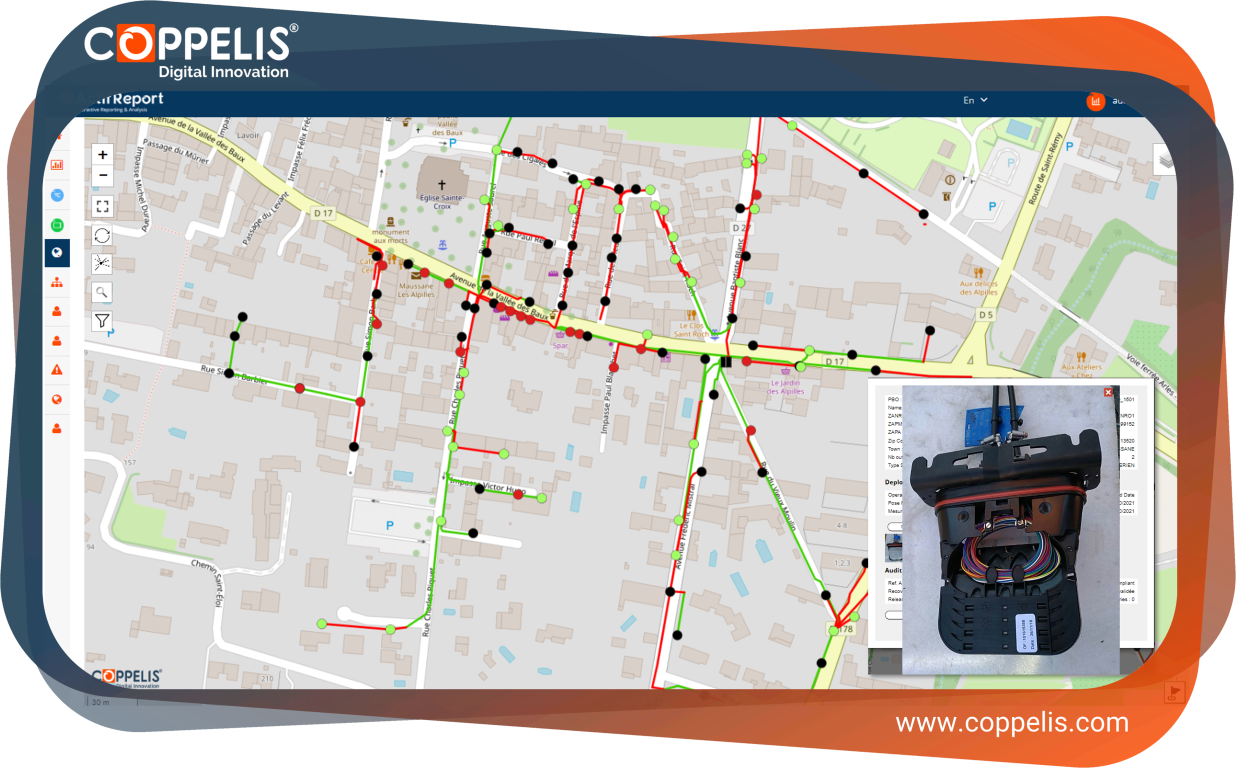A compliance map of FTTH network : why is it a must to have ?
Introduction to Infrastructure maps
An infrastructure map is a type of map that displays the location and layout of various types of infrastructure, such as roads, bridges, railways, airports, and utility networks. It provides a comprehensive overview of the physical infrastructure of a region or area, including the location and layout of key infrastructure assets.
Infrastructure maps are typically created using geographic information system (GIS) technology, which allows for the integration and analysis of different types of spatial data. This data can include information on the physical location of infrastructure assets, as well as details on their condition, capacity, and performance.
FTTH compliance maps
A compliance map of an FTTH (Fiber-to-the-Home) network is a document or diagram that provides a comprehensive overview of the vetwork infrastructure,
network’s configuration, layout, and compliance with regulatory requirements and industry standards. It includes detailed information on the location of fiber optical cables, network equipment, switches, connectors, routing, and other key components of the network.
The compliance map typically includes information on the following aspects of the network:
1. Physical network layout: This includes information on the physical location of fiber optic cables, network equipment, backbones and other key components of the network. It may also include information on the location of fiber optic splices, distribution boxes, and other key network elements.
2. Network configuration: This includes information on the network’s configuration, including the type and capacity of network equipment, the number of fibers in each cable, and the location of network termination points (NTPs) and customer premises equipment (CPE).
3. Compliance with regulatory requirements: The compliance map includes information on the network’s
deployment compliance with regulatory requirements, such as network-services, network design, safety and environmental regulations.
4. Compliance with industry standards: The compliance map includes information on the network’s compliance with industry standards, such as those set by the International Telecommunications Union (ITU) and the Fiber to the Home Council (FTTH Council).
Benefits of FTTH compliance maps
A compliance map of an FTTH (Fiber-to-the-Home) network provides several benefits, including:
Ensuring regulatory compliance
A compliance map helps service-providers to ensure that the FTTH network design meets the necessary regulatory requirements, including safety and environmental regulations. It provides a clear record of the network’s compliance with regulatory standards, making it easier to obtain necessary permits and certifications.
Identifying network gaps
A compliance map helps to identify gaps or areas of the network that do not meet the necessary standards. This can include areas where the network is not properly installed, or where it does not meet the necessary performance or reliability standards.
Facilitating network maintenance
A compliance map can be used as a reference tool for network maintenance and upgrades. It helps to identify areas that require maintenance or upgrades and provides a clear record of the network’s current configuration and performance.
Improving network efficiency
A compliance map can be used to identify areas where the network can be optimized to improve efficiency and reduce costs. This can include identifying areas where fiber optic cables can be consolidated or rerouted to reduce network complexity and improve network performance.
Supporting network expansion
A compliance map provides a clear record of the existing network configuration, making it easier to plan and design network expansions or upgrades. It can be used to identify areas where the network can be expanded to meet increasing demand for high-speed internet access.
A compliance map of an FTTH network provides a valuable reference tool for network operators and helps to ensure that the network meets the necessary standards for safety, reliability, and performance. It can help to identify areas where the network can be improved or optimized, and can support network expansion and growth over time.
Coppelis provides the needed software to build a compliance map of an FTTH network. Like this example : https://coppelis.com/telecom
Please contact us for more information : https://coppelis.com/quick-sprint


